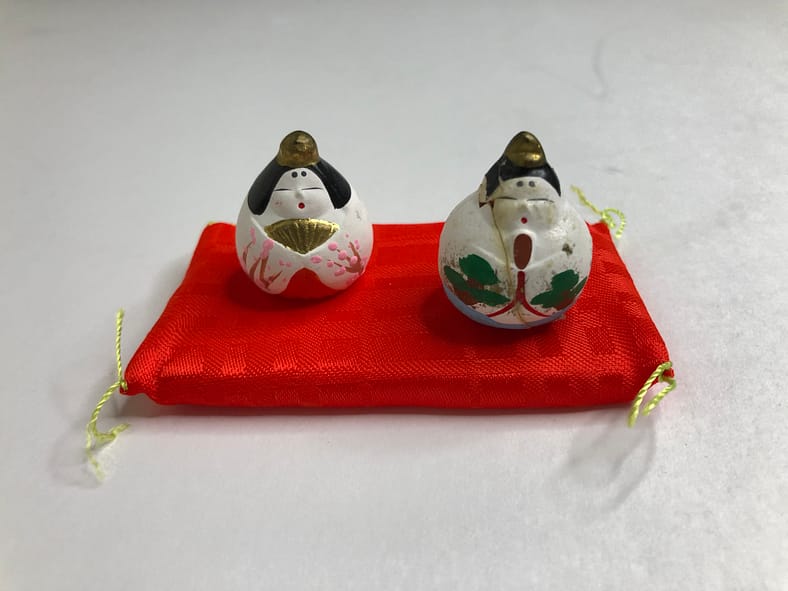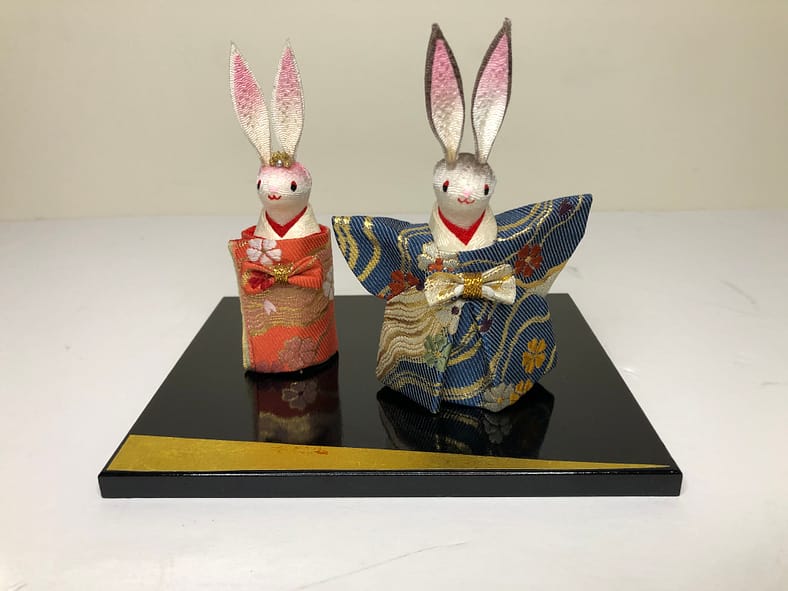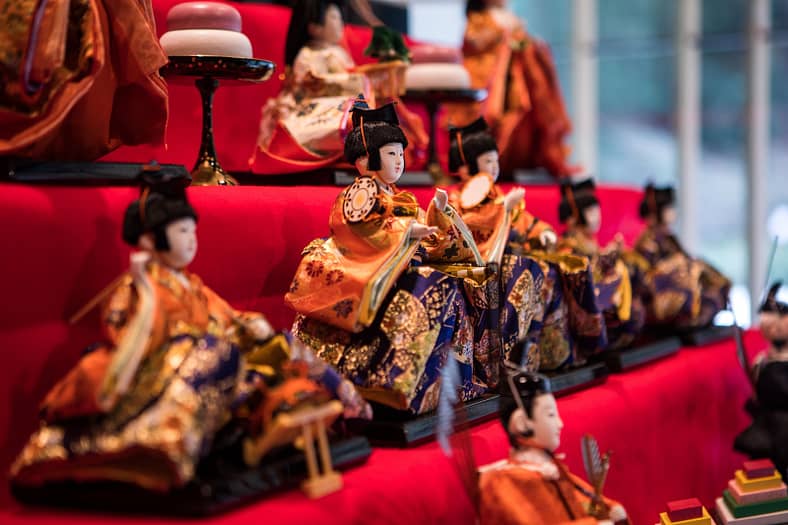
Hina Matsuri, also called Doll’s Day or Girl’s Day, is celebrated each year in Japan on March 3 to celebrate the happiness, growth, and good health of girls. This celebration is also known as Momo-no-Sekku, or Peach Festival.

Hina Matsuri is said to have originated in the Heian period (794-1185), a time when people believed that dolls had the power to drive away evil spirits. Paper or straw hina dolls were set afloat on boats down the river and out to sea, sweeping away troubles and bad spirits. This tradition called nagashi bina still takes place in some regions in Japan.

The tradition of displaying hina dolls at home began during the Edo period (1603-1868) and still takes place today. Traditionally, parents or grandparents purchase a set of hina dolls following the birth of a girl. In some instances, hina dolls are passed down from previous generations.

Hina dolls are displayed on a tiered platform (hina dan) covered with a red carpet (dankake). The top tier holds the two imperial dolls. The Emperor doll holds a ritual baton and the Empress a fan. The following tiers hold their attendants: the second tier holds three court ladies (san-nin kanjo). Each lady holds ceremonial sake equipment. The third tier holds five court musicians (gonin bayashi) each holding a musical instrument except the singer who holds a fan. The fourth tier holds two ministers (udaijin and sadaijin), the one on the right (Minister of the Left) being older and higher ranking. The three court attendees (sannin jogo) on the fifth tier each show angry, merry, and sad faces.
Here at the Garden, the Hina doll collection was donated by the Dozono family and will be displayed at the Cultural Corner.
Portland Japanese Garden’s long-time volunteer, Tsuru Tuenge says, “Hina-Matsuri is one of my favorite volunteer activities at the Garden.” Tsuru would show visitors pictures of the incumbent Emperor and Empress of Japan’s coronation ceremony that took place in October 2018. Visitors enjoy the similarity between the costumes and accessories worn by the dolls and the present-day royals.

Special ceremonial delicacies for Hina Matsuri include: shirozake (sake made from fermented rice), hina-arare (colorful, sugar-coated rice crackers), hishi-mochi (diamond-shaped layers of colorful thin rice crackers), and chirashi sushi (pastel-toned, scattered-style sushi) with clear clam broth.
(Photo credit: Lynn Geis, Jonathan Ley, CORA/PIXTA)